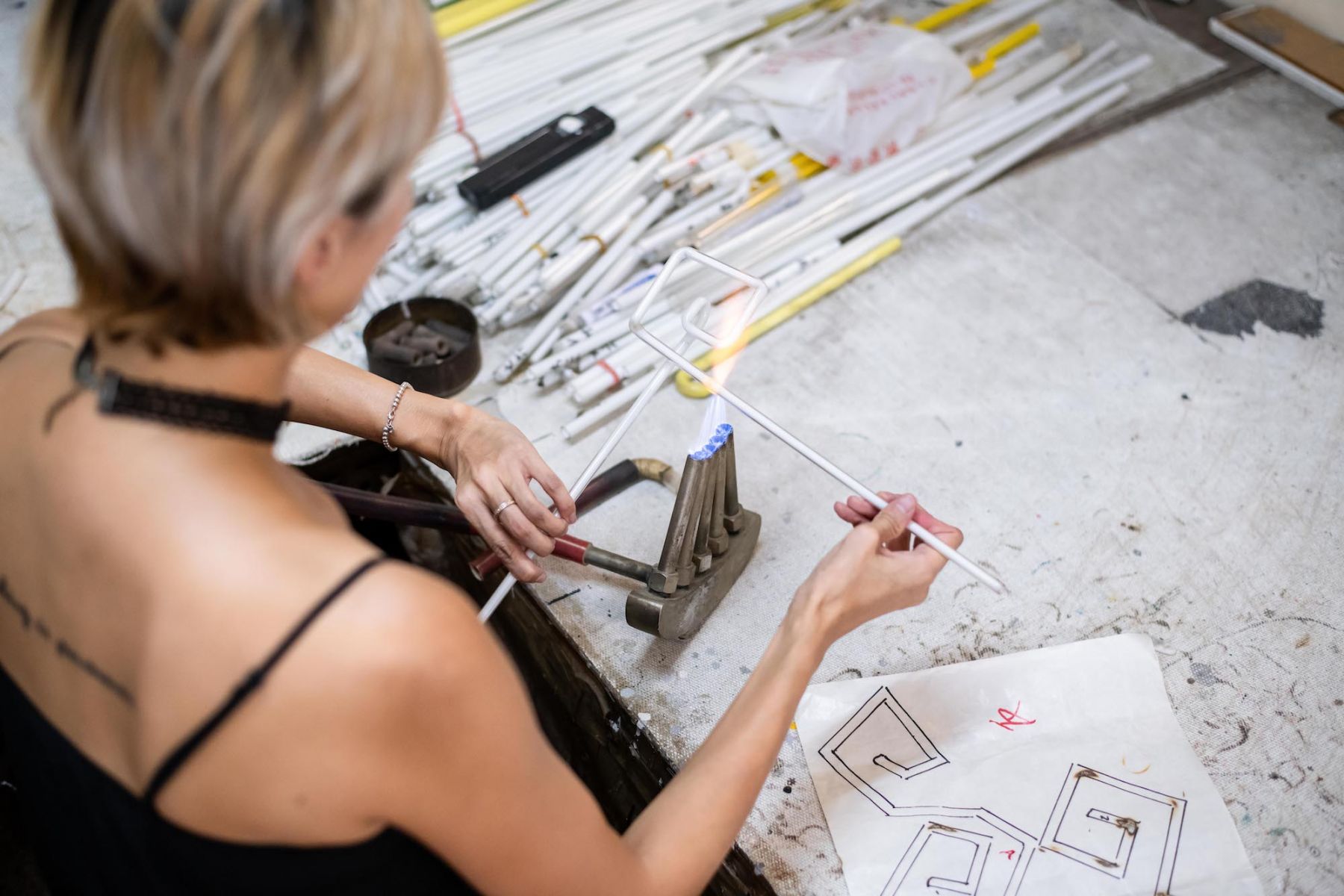Neon signs, part of Hong Kong’s visual heritage, have been fading away. Karen Chan shares how she learned this “secret trade,” the messages behind her favourite works, and her mission to make neon shine as an art form
Sometimes you have to leave a place to realise what you love about it.
When native Hongkonger Karen Chan felt homesick while studying design in the UK, she found herself craving dim sum and seeking out visual cues that reminded her of home. She would look for pawnshop signs and draw neon back in her room. “There’s something in me that I like the theatrical and dramatic, and neon streetscapes exactly give me that feeling,” says Chan, also known by her artistic name Chankalun.
Back in Hong Kong in 2018, Chan organised a neon group exhibition My Light, My Hood and was surprised to discover that many streets she recalled as full of neon had already been stripped bare or replaced by LEDs. She persuaded Master Wong Kin-wah, a neon bender in his 70s, to lead a workshop for the exhibiting artists and got her first try at the craft.
It took convincing because the mentality among longtime masters has been to pass skills onto family members, not strangers who might become the competition. “Craftsmen in Hong Kong used to learn because they wanted to make a living, and they had to learn by observing and experimenting,” explains Chan, noting there are no neon textbooks or standardised courses.
See also: 7 Things You Will Only Find in Hong Kong
Neon is one of the most demanding crafts; it involves glassblowing and bombarding (the process of injecting gas into the glass tubes), meaning you need some understanding of chemistry and engineering. Chan likes to describe it as combining skills from different sports: the strength of a weight lifter to hold the glass; the balance and flexibility of a gymnast; and the mental recall of a chess player to replicate the same angle with precision.

“Through this practise, I understand myself more and accept myself more,” says Chan. “I have many physical traits that I just can’t deny, so it’s more about how I view them and make them my strengths.” She adds that she has thin arms unlike most male benders but strong legs from ballet training and they give her stability and control while working. A high tolerance for pain also helps. Chan doesn’t wear gloves and has been burned repeatedly; once she even got heat stroke and vomited in Master Wong’s studio.
After studying with him for months, Chan launched The Neon Girl project to learn neon bending techniques around the world, from Taiwan and South Korea to France and Italy. So far she’s connected with artists including Remy de Feyter in the Netherlands and James Akers and Jess Krichelle in the US. Each is pushing neon in experimental directions, say, incorporating airbrush painting or multimedia elements.
“The new generation of neon artists, how I see it is everyone is open sourcing knowledge and sharing opinions and experiences to make it move forward,” says Chan. “And that is very interesting because it’s so different to the older generation.”
So how bright is the future of neon in Hong Kong?
While she wants to see existing signage preserved, Chan's focus is on exploring the possibilities of glass and gas as a modern art form—and teaching the skills. She runs HK Crafts, an NGO that hosts workshops to promote and reinvent fading traditions, and recently began collaborating locally with another young neon practitioner.
“I hope both of us can keep spreading neon culture and showing the general public the possibilities of neon,” says Chan. “Then we will see more experimental neon art pieces in the city, not just traditional ones, and we can really make it live as a new memory and landscape.”
Below Chan shares the stories behind three of her favourite neon art works, each with a powerful social message.
Chan elaborated on paving her way in the neon world at the TEDxTinHauWomen event in December 2021, for which she created the neon logo sign; participants also included Arcadia Kim on reframing our relationship with screen time.




